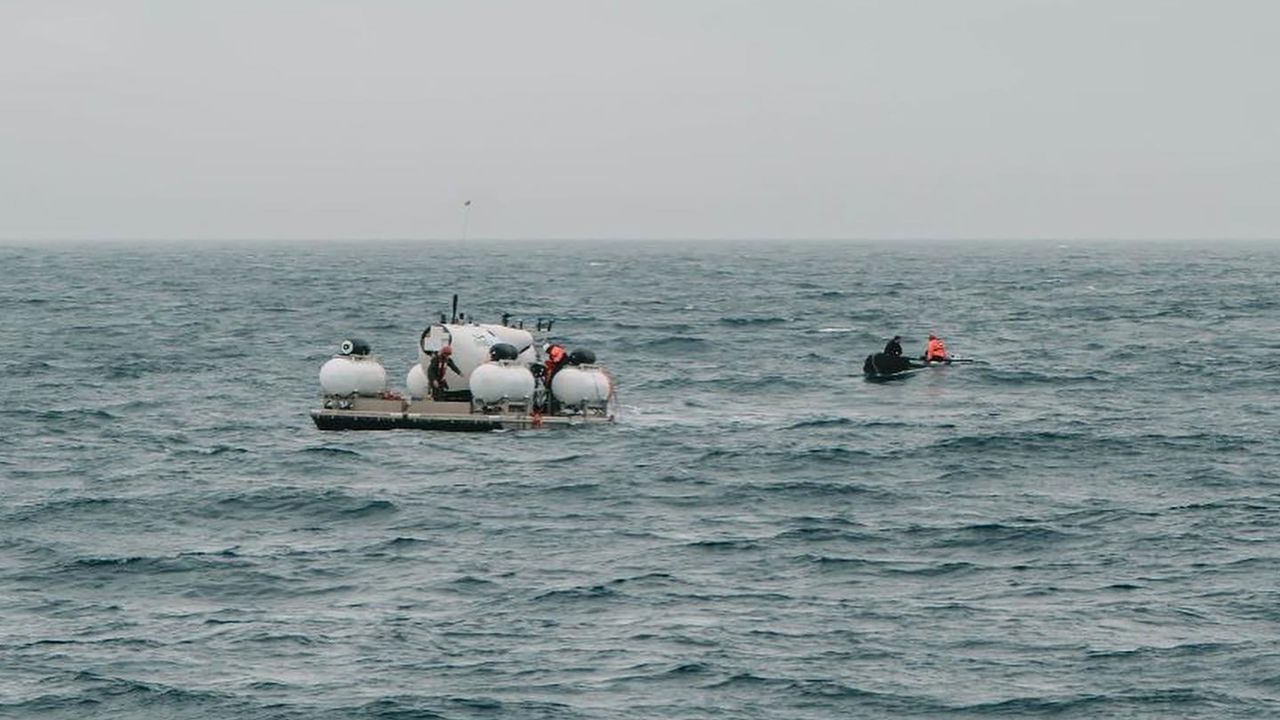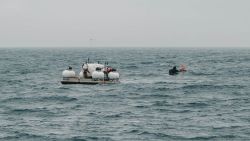Editor’s Note: Read more here for CNN’s explainer on the catastrophic implosion that killed all five passengers on the missing submersible.
Time is running out to find five people aboard a submersible missing since Sunday on what was supposed to be a roughly 10-hour round trip to see the wreck of the Titanic.
Oxygen levels inside the Titan submersible had been expected to last 96 hours, but after days of scanning above and below the surface of the North Atlantic Ocean, rescuers have found no trace of the vessel.
Banging noises heard Tuesday gave authorities “continued hope of survivors,” but by Wednesday, authorities hadn’t been able to locate the source of the sounds, or what had made them.
Here’s what we know so far.
How did they go missing?
The submersible was part of an eight-day journey conducted by OceanGate Expeditions, priced at $250,000 a person. The trip is based out of Newfoundland, with participants first traveling 400 nautical miles to the wreck site, which is about 900 miles (1,450 kilometers) off the coast of Cape Cod, Massachusetts.
The submersible began its two-hour descent to the wreck on Sunday morning, June 18. It lost contact with the Polar Prince, the support ship that transported the vessel to the site, 1 hour and 45 minutes into its descent, officials said.
Search operations began later that day.
It’s still not clear what happened to the submersible, why it lost contact, and how close to the Titanic it was when it went missing.
Who’s on board?
While authorities have not released the names of the five missing people, British businessman Hamish Harding, French diver Paul-Henri Nargeolet, Pakistani billionaire Shahzada Dawood and his son Sulaiman Dawood have all been confirmed to be on board.
The fifth person is OceanGate CEO and founder Stockton Rush, according to a source with knowledge of the mission plan. OceanGate did not respond to CNN’s request for comment.
Harding is based in the United Arab Emirates, and is the chairman of aircraft brokerage Action Aviation. The company said on social media that Harding was on board the submersible; Harding himself had posted online on Saturday, saying he was “proud to announce” his participation in the dive to the Titanic.
Harding is an avid adventurer, having traveled to space on board the Blue Origin flight last year, and to the Challenger Deep in the Pacific Ocean, believed to be the deepest point in the world.
He had posted on Saturday that Nargeolet was scheduled to be on the submersible with him. Nargeolet’s family confirmed to CNN affiliate BFMTV that he was aboard the vessel.
The diver has decades of experience exploring the Titanic. He serves as the director of underwater research at RMS Titanic Inc., the company that has exclusive rights to salvage artifacts from the ship. According to his biography on the company’s website, Nargeolet completed 35 dives to the Titanic wreck and supervised the recovery of 5,000 artifacts.
The Pakistani father and son were also confirmed to be on board in a statement by their family. The Dawoods are a prominent Pakistani business family that runs some of the largest corporations in the country, with a portfolio spanning energy, petrochemicals, fertilizers, IT and food and agriculture.
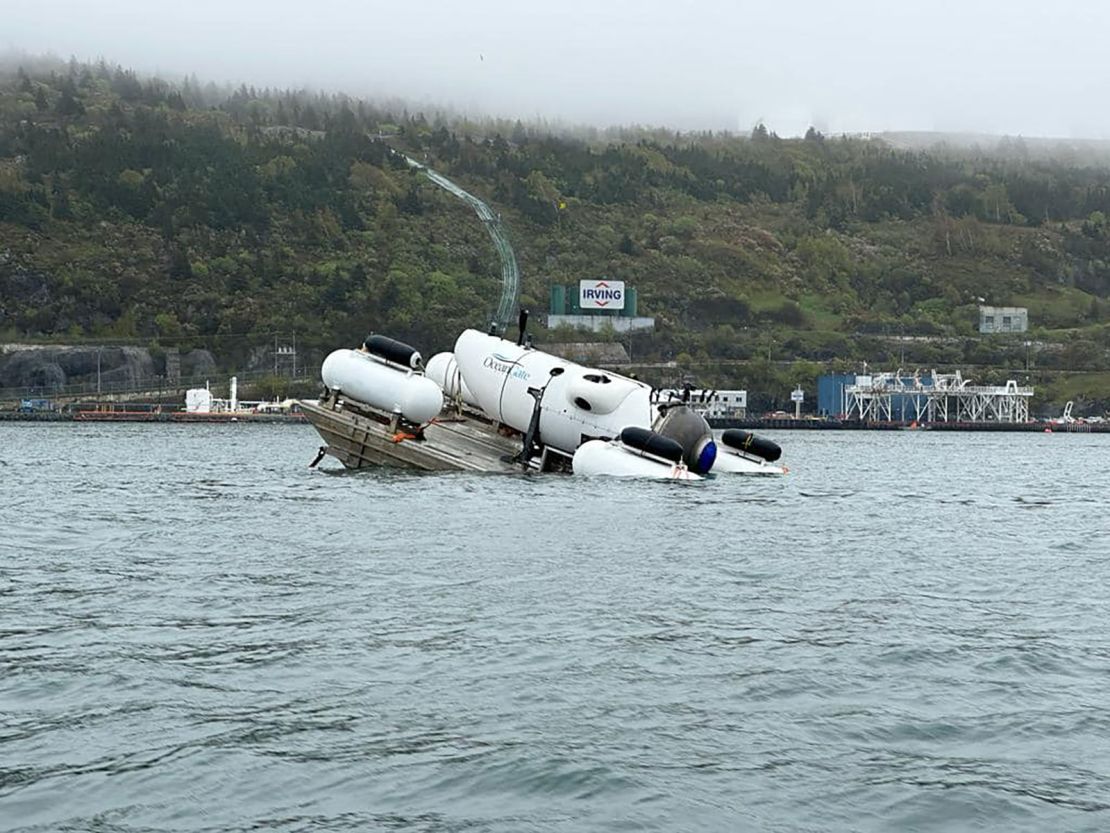
How much time do they have?
The submersible is designed to carry 96 hours of oxygen for five people on board.
By 1 p.m. ET Tuesday, the US Coast Guard said it likely had about 40 hours left. That gives authorities until around early Thursday to locate and retrieve the vessel.
But there are a number of challenges, including the remote location, local weather conditions, the state of the submersible – and the extraordinary depth of the ocean in the area they went missing.
The deepest ever underwater rescue was that of Roger Chapman and Roger Mallinson, who were rescued from the Pisces III submersible at depths of 1,575 feet in 1973. They were trapped for 76 hours before finally being hauled to the surface.
The Titanic wreckage is much deeper, sitting nearly 13,000 feet below sea level.
It’s not clear how deep the submersible is. Some experts have pointed out it might be near the surface, since submersibles typically are able to shed weight for additional buoyancy. But even if they reach the surface, the door is bolted from the outside – meaning they still risk running out of oxygen unless they are located and freed by rescuers.
What is a submersible? What’s it like inside?
A submersible is different from a submarine in a few key ways. It has limited power reserves, so it needs a support ship on the surface to launch and recover it. It can’t stay underwater for as long; the Titan typically spends 10 to 11 hours during each dive to the Titanic wreck, compared to submarines that can stay underwater for months.
The Titan is made of carbon fiber and titanium, weighing 23,000 pounds, with safety features to monitor the structure integrity of the vessel, according to OceanGate.
It’s also small and sparse on the inside, with about as much space as a minivan, according to CBS correspondent David Pogue, who took a trip on the Titan down to the Titanic wreck last year. There is only one toilet, and no seats; passengers sit cross legged on the floor. There are no windows except the porthole through which passengers view the Titanic.
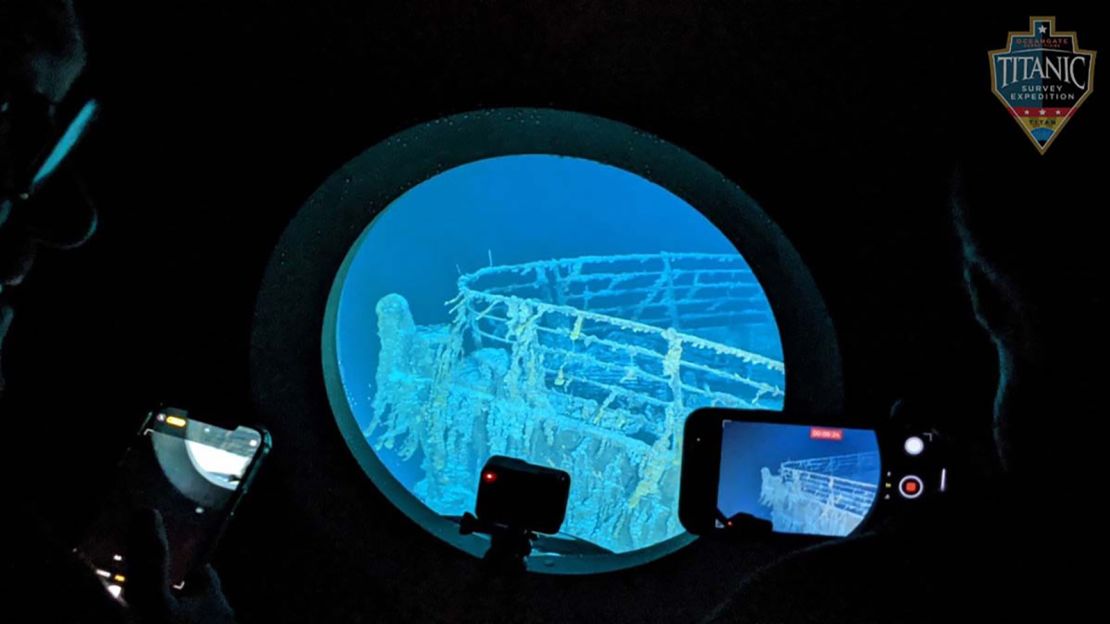
With no GPS underwater, the submersible is only guided by text messages from the surface ship. On Pogue’s trip, communications broke down during a dive and the submersible was lost for over two hours, he said.
The pilot steers the sub using a video game controller – but if that fails, a hard-wired system can control the propellers, according to Aaron Newman, who took the dive on the Titan in 2021 and is now an OceanGate investor. Thrusters are powered by an external electrical system, while an internal system powers communications and a heater, he said.
What search operations are underway? How might it be rescued?
Multiple agencies from both the US and Canada are involved in the search, looking both on the surface and underwater. As of Wednesday, they have searched an area two times the size of Connecticut, up to 2.5 miles (4 kilometers) deep, said the US Coast Guard.
Boats, aircraft and radar equipment are scanning above water in case the submersible had surfaced. Sonar buoys and sonar equipment on ships are also being used to detect sounds below water.
The US Coast Guard, US Navy, US Air Force, Canadian Coast Guard, and Canadian military are all coordinating the search and potential rescue operations. France has also sent a research ship, equipped with an underwater robot, to join the search.
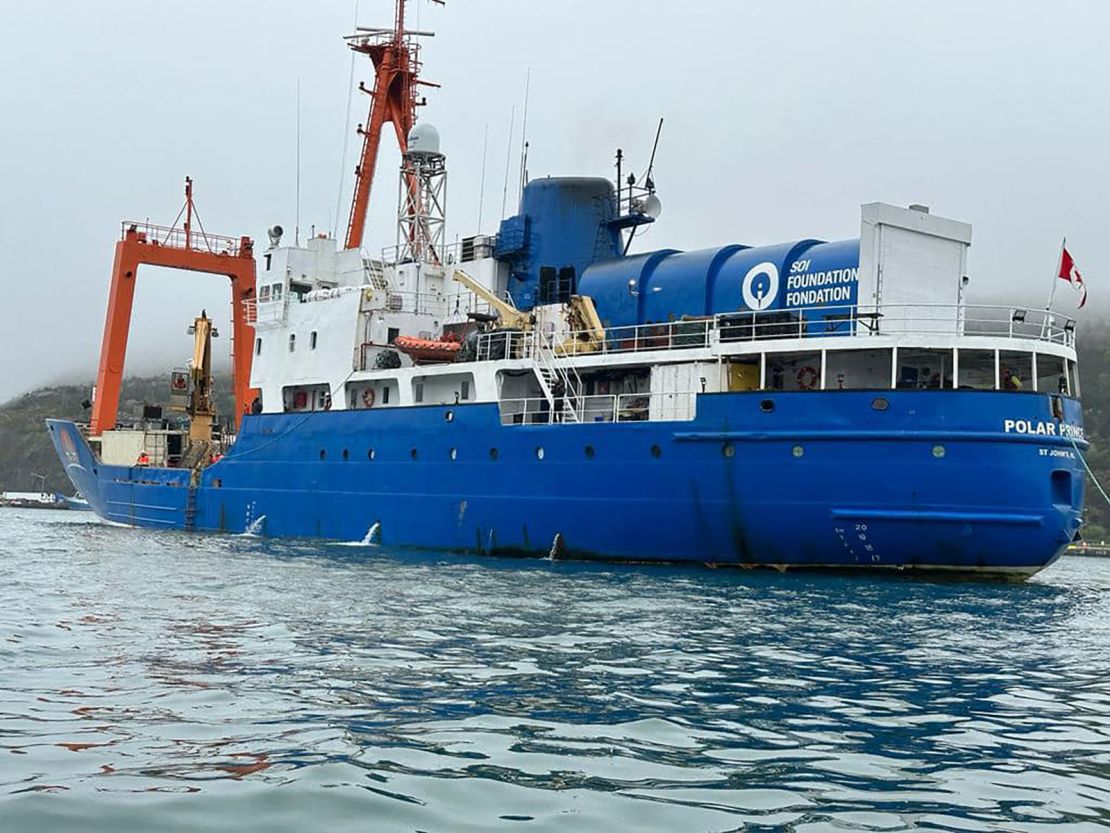
A number of private and commercial groups are also involved; a pipe-laying vessel with underwater capabilities, belonging to oil and gas company TechnipFMC, arrived on scene Tuesday.
Deep sea-mapping company Magellan, most famous for its one-of-a-kind deep sea imagery of the Titanic, is trying to join the search – but transporting its equipment from Europe to Canada is an issue. Other privately owned vessels are “making preparations” to help, said a Coast Guard official.
But finding the submersible is just the first step; rescuing it could be a whole other challenge. Depending where and at what depth the submersible is found, there could be limited options for rescue vessels.
For instance, the US Navy’s nuclear-powered submarines usually operate at 800 feet or less – meaning they can’t dive down to the ocean floor, where water pressure on the submarine hull could make it implode.
During the 1973 rescue, authorities used other submersibles and a remotely operated, Navy-developed recovery vessel to attach lines to the Pisces III – which were then used to pull it back to the surface.
It’s not clear whether these methods could work for the Titan, given the uncertainty around its location.
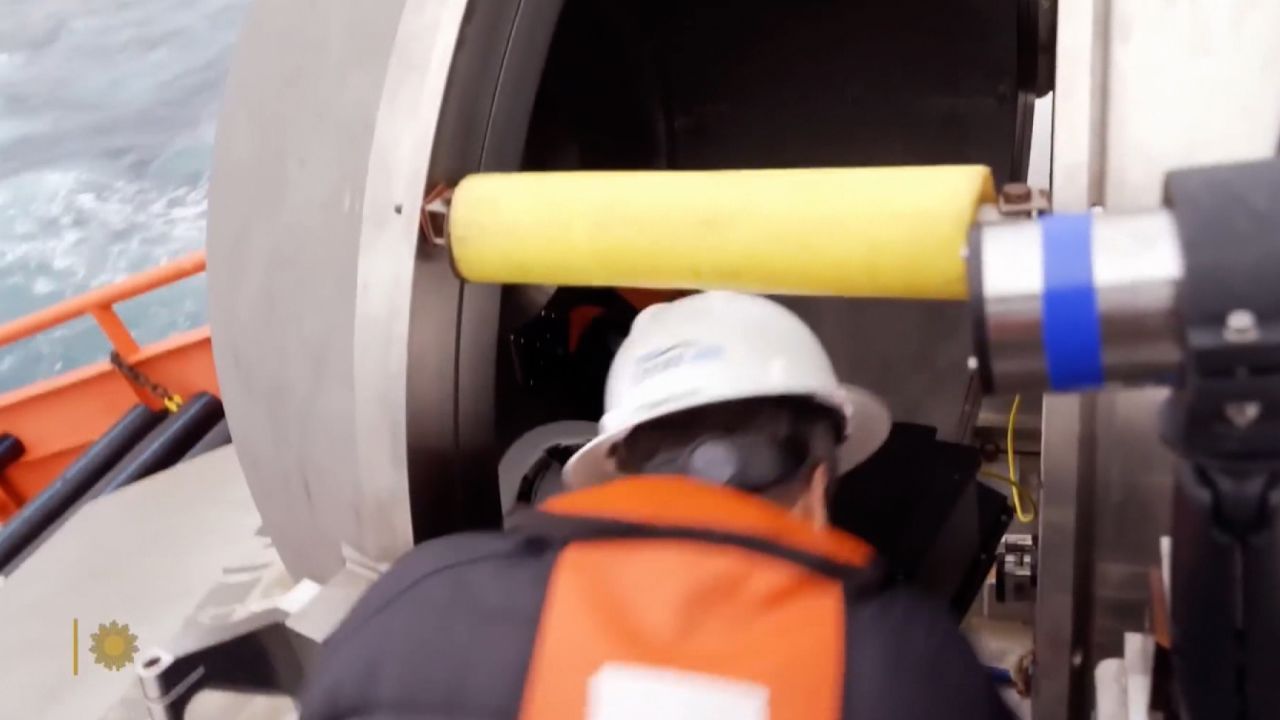
Have there been safety concerns before?
The incident has prompted discussion around the safety of deep-sea tourism, with some pointing out that OceanGate has come under criticism before.
Court records show that OceanGate faced a series of mechanical problems and inclement weather conditions that forced the cancellation or delays of trips in recent years – including one time it had to rebuild the Titan’s hull because it showed “cyclic fatigue” and wouldn’t be able to travel deep enough to reach the Titanic, according to a 2020 article by GeekWire.
Two former OceanGate employees separately brought up similar safety concerns about the thickness of the Titan’s hull when they were employed by the company years ago.
A statement from a research lab also appears to show conflicting information about the engineering and testing that went into the development of the vessel.
OceanGate’s legal representative boasted the Titan’s “unparalleled” safety features in a 2021 court filing, saying it had been built with the University of Washington’s Applied Physics Laboratory – but the university said the lab had never dealt with the design, engineering or testing of the Titan.
Industry leaders also expressed concerns five years ago about the company’s “experimental approach” to the Titan submersible and its trip to the Titanic, the New York Times reported Tuesday.
The Manned Underwater Vehicles committee of the Marine Technology Society said it penned a letter to Rush, the missing CEO, in 2018. The group warned of potential “negative outcomes (from minor to catastrophic) that would have serious consequences for everyone in the industry,” said the letter obtained by the Times.
OceanGate has not responded to a request for comment on the letter, or on the two former employees’ claims.
CNN’s Brad Lendon, Eric Levenson and Raja Razek contributed reporting.

